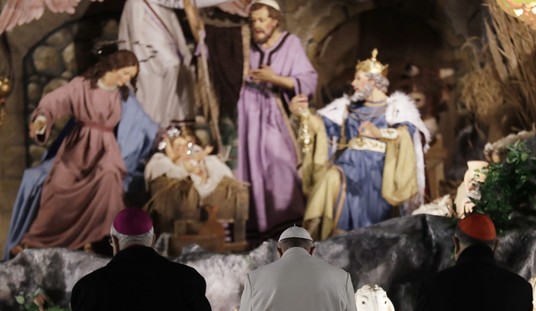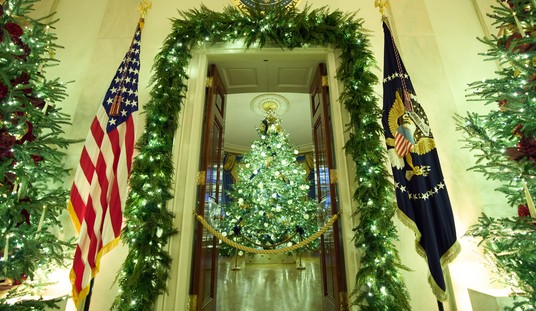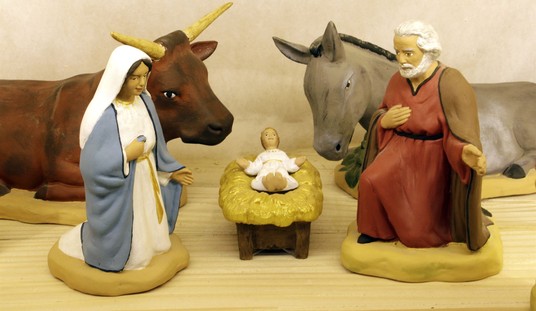Among the blessings of getting older are the friendships you gather along the way. Sunday my husband partook of one of those blessings: an old friend called, and they spoke for nearly three hours. The friend sits on the other side of the political divide, and though he tried to sound calm, fear kept creeping into his voice.
He’d heard all the usual things: that President Donald Trump had praised Nazis, that “fine people on both sides” meant white supremacists, that January 6 was an organized fascist coup, and democracy itself was hanging by a thread. He believed each one, down to the smallest exaggeration. My husband gently corrected what he could, but after a while, he switched from facts to reassurance. Nothing we said could unmake the terror he had absorbed through repetition, so he told him the world was not ending.
That question has lingered with me ever since: how is it that, in a nation richer, freer, and safer than any civilization in history, so many live as though the Reichstag were burning again?
We are not in 1939. Back then, when people spoke of Nazis or fascists, they meant tanks, secret police, and mass graves. Evil was visible; it wore uniforms and carved its mark on continents. Today, “fascism” is a slogan hurled across dinner tables and social feeds, drained of meaning but charged with dread. The language of apocalypse remains, but the stakes have changed. Fear itself has become our national pastime.
The Fear Economy
We live in the safest age in human history. Our grocery shelves are full, our lights stay on, and we can cross a continent in a day. Most Americans will never face war, famine, or plague. Yet half the nation wakes each morning convinced that disaster is one headline away. Turn on any news feed and you’ll hear that democracy is “teetering,” that rights are “under assault,” that the planet is “dying.” Every crisis comes with an adjective—existential, unprecedented, catastrophic.
Fear is not just a byproduct of that language; it is the product itself. Words that once described real danger are now used to manufacture emotion. “Crisis” no longer means a moment of decision; it means ratings. “Insurrection” once referred to a rebellion meant to overthrow a government; now it describes a riot. “Fascist” once meant Mussolini’s blackshirts; today it can mean anyone who votes the wrong way. These words don’t enlighten. They charge the air, short-circuit reason, and keep viewers coming back for the next jolt.
Because outrage wins attention, it triggers an arms race of speech. When one side calls a disagreement a “war on democracy,” the other answers with “tyranny,” “treason,” or “deep state.” Each escalation raises the emotional stakes, forcing the next round to shout even louder. Moderation begins to sound like weakness; calm becomes invisibility. What began as rhetoric becomes a contest of moral panic in which whoever can summon the darkest imagery seems the most righteous.
This is the adrenaline economy: a society trained to stay in fight-or-flight even when no wolf prowls at the door. The calmer a population becomes, the less it clicks, so calm must be destroyed. Once fear becomes a habit, it even feels like virtue. To be terrified is to be “informed.” To be calm is to be “complacent.”
Yet this form of fear is a luxury. Only a people safe enough to imagine an apocalypse can afford to live inside it. Our grandparents’ fear was of things that could actually kill them: disease, depression, war. Ours is mostly theatrical, anxieties performed across screens until they eclipse gratitude. When the wolf no longer comes to the door, we summon one from the algorithm.
In doing so, we lose proportion. We mistake discomfort for oppression and disagreement for threat. We trade reality for narrative and think we have gained moral clarity, when all we have really done is surrender peace of mind.
The Social Allergy
Part of our problem is that we’ve lost our sense of scale. A generation that never crouched under a bombing raid or faced a bread line now reacts to every policy dispute as if it were Pearl Harbor. We have the reflexes of our ancestors but none of their dangers.
Psychologists call it threat misattribution. The body’s ancient fight-or-flight machinery is still running, but with nothing life-threatening to bite down on, it turns against lesser irritants. Every news alert, every offhand comment online, every hint of social disapproval triggers the same surge of adrenaline that once helped us survive predators. Our nervous systems are tuned for saber-tooth tigers, but the jungle we inhabit now is digital.
Civilizations can develop the same disorder. After the Cold War, the great existential battles faded. Without large external threats, the collective immune system began mistaking inconvenience for invasion. We became allergic to stress itself. The smallest dose of uncertainty — an election loss, a rumor, a tweet — sets off a full inflammatory response of outrage and dread.
Like an allergy, it’s self-perpetuating. The more we react, the more sensitive we become. Each cycle of panic lowers our tolerance for ambiguity until society lives in a kind of moral anaphylaxis, swollen and breathless from too many false alarms.
The cure isn’t to seal ourselves away but to rebuild exposure gradually. We need contact with real life again — the tangible world of work, neighbors, faith, and small risks. Those are the microbes of sanity. Without them, the social body will keep mistaking disagreement for danger and discomfort for doom.
The Spiritual Cost and the Way Back to Calm
Fear, left unchecked, does more than exhaust the nerves; it hollows the soul. A society that lives on adrenaline cannot live on grace. Constant crisis leaves no room for gratitude, and without gratitude, hope withers. We stop seeing neighbors as people to be loved and start seeing them as sources of contagion: carriers of the wrong ideas, slogans, or votes.
A few years ago, a congressional memo leaked recommending that government staffers receive a list of immunizations before attending a NASCAR race. The advice was bureaucratic caution, but it landed like an insult. To millions of fans, it said, these people are unsafe; their very presence is a health risk. Nothing better captures how fear of contagion — physical, political, or cultural — has replaced the neighborly courage that once bound us. We no longer fear disease; we fear one another.
Faith traditions have always warned that fear and love cannot dwell in the same heart. Fear narrows; love widens. When the mind is clenched in self-protection, it cannot reach out in charity. That is the quiet corrosion now eating at American community. We no longer trust one another’s basic decency because our media diet insists that decency itself is rare. Yet when we step outside the noise—into churches, small businesses, VFW halls, volunteer crews—we find ordinary kindness everywhere, humming along unreported.
Rebuilding calm begins with turning down the volume: fewer national headlines, more local conversations. It deepens through physical presence: sharing coffee, tending gardens, attending potlucks, and shaking hands after Sunday service. These are the acts that remind the body it is safe and the spirit that it is not alone.
Gratitude, too, is a muscle that must be worked. The simplest ritual, like naming three good things each morning or saying a quick prayer of thanksgiving, reanchors perception in reality. It teaches the heart to notice abundance rather than absence. Gratitude is not denial of hardship; it is proportion restored.
Reassurance itself is a civic virtue. To calm a frightened friend, to say “We’re going to be all right,” is not naïveté; it is stewardship. Every generation owes its successors the inheritance of steadiness. The world may shake, but the human soul is not meant to live perpetually in alarm.
If enough of us refuse the fear economy and choose to live as witnesses of peace rather than amplifiers of panic, the fever will break. We will remember that courage is not the absence of danger but the presence of purpose, and that gratitude is the ground on which courage stands.
The Closing Circle
I keep thinking of that phone call. My husband’s old friend had reached out not for information but for comfort. Beneath all his words about politics and policy was the simple plea: Tell me we’re going to be okay.
That is what so many of us want, though pride keeps us from saying it aloud. We are drowning in headlines and starving for reassurance. We are a people in need of calm voices: neighbors who will answer fear not with more fear but with steadiness born of gratitude.
My husband didn’t try to convert his friend or out-argue him. He simply told the truth: that this is still a good country, strong and capable of self-correction; that the world is not ending; and most importantly, that friends with opposite views can still love one another. It was a small act, but small acts are what heal the body politic. Each word of reassurance is an antibody against despair.
America’s story has never been free of danger or division. Yet through every trial, we have found renewal in the same place, in friendship, in faith, in the quiet courage to live decently when others shout. Fear shrinks the soul, but gratitude expands it, and there is still so much to be grateful for.
If we can remember that, if we can speak peace into one another’s panic, the noise will fade. The fever will break. And we may yet recover what we’ve almost forgotten: that love of neighbor, not fear of the future, is what truly holds a nation together.
Editor's Note: When you need a place to retreat, recharge, and talk about the things happening today that affect us all, PJ Media is here for you. Support our mission. Join PJ Media and use promo code POTUS47 to get 74% off your membership.









Join the conversation as a VIP Member